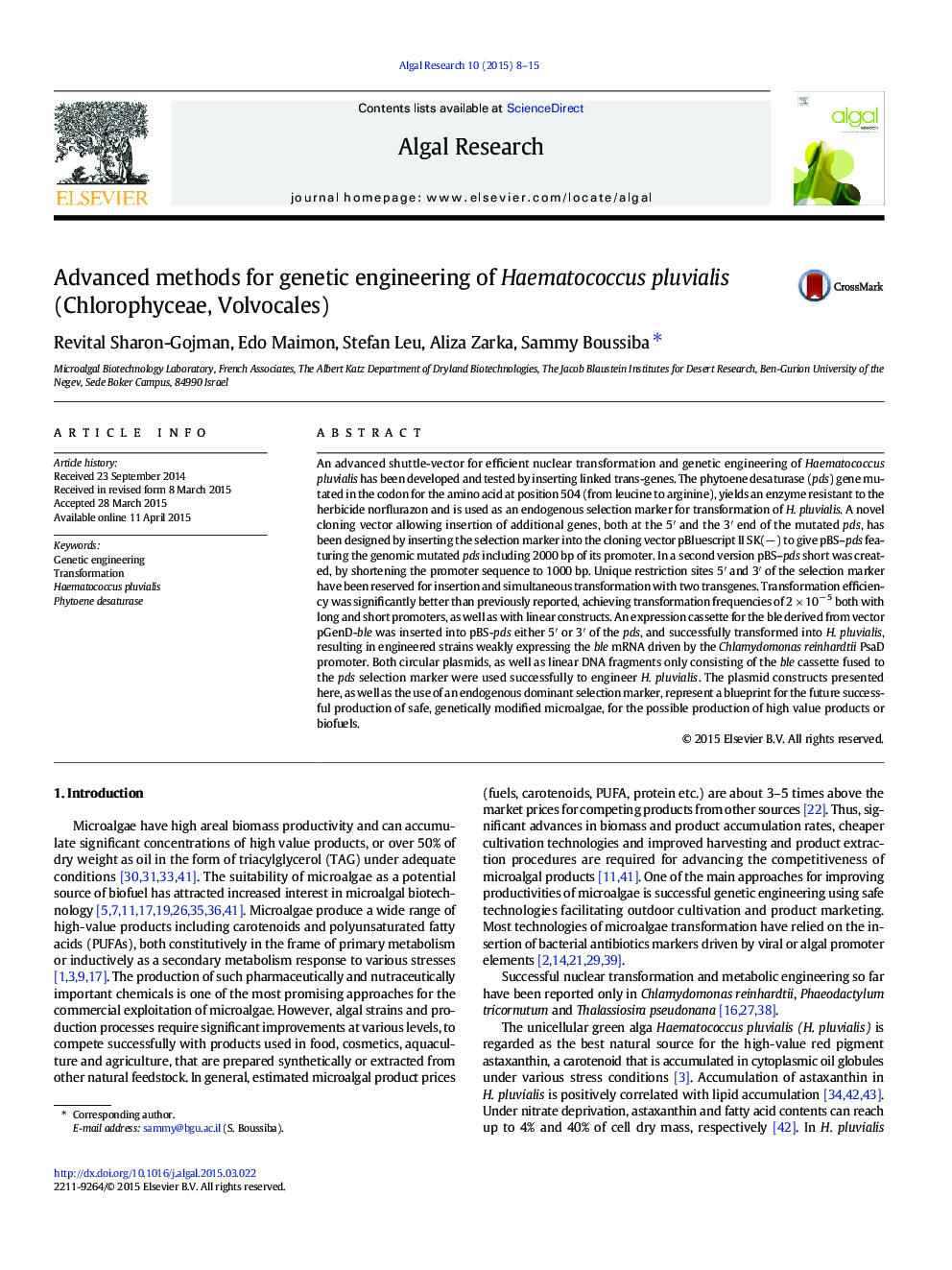| Article ID | Journal | Published Year | Pages | File Type |
|---|---|---|---|---|
| 1742011 | Algal Research | 2015 | 8 Pages |
•High efficiency transformation method for Haematococcus pluvialis was developed.•A novel cloning vector allowing insertion of at least two genes has been designed.•The method is reproducible and transformants are stable.
An advanced shuttle-vector for efficient nuclear transformation and genetic engineering of Haematococcus pluvialis has been developed and tested by inserting linked trans-genes. The phytoene desaturase (pds) gene mutated in the codon for the amino acid at position 504 (from leucine to arginine), yields an enzyme resistant to the herbicide norflurazon and is used as an endogenous selection marker for transformation of H. pluvialis. A novel cloning vector allowing insertion of additional genes, both at the 5′ and the 3′ end of the mutated pds, has been designed by inserting the selection marker into the cloning vector pBluescript II SK(−) to give pBS–pds featuring the genomic mutated pds including 2000 bp of its promoter. In a second version pBS–pds short was created, by shortening the promoter sequence to 1000 bp. Unique restriction sites 5′ and 3′ of the selection marker have been reserved for insertion and simultaneous transformation with two transgenes. Transformation efficiency was significantly better than previously reported, achieving transformation frequencies of 2 × 10− 5 both with long and short promoters, as well as with linear constructs. An expression cassette for the ble derived from vector pGenD-ble was inserted into pBS-pds either 5′ or 3′ of the pds, and successfully transformed into H. pluvialis, resulting in engineered strains weakly expressing the ble mRNA driven by the Chlamydomonas reinhardtii PsaD promoter. Both circular plasmids, as well as linear DNA fragments only consisting of the ble cassette fused to the pds selection marker were used successfully to engineer H. pluvialis. The plasmid constructs presented here, as well as the use of an endogenous dominant selection marker, represent a blueprint for the future successful production of safe, genetically modified microalgae, for the possible production of high value products or biofuels.
